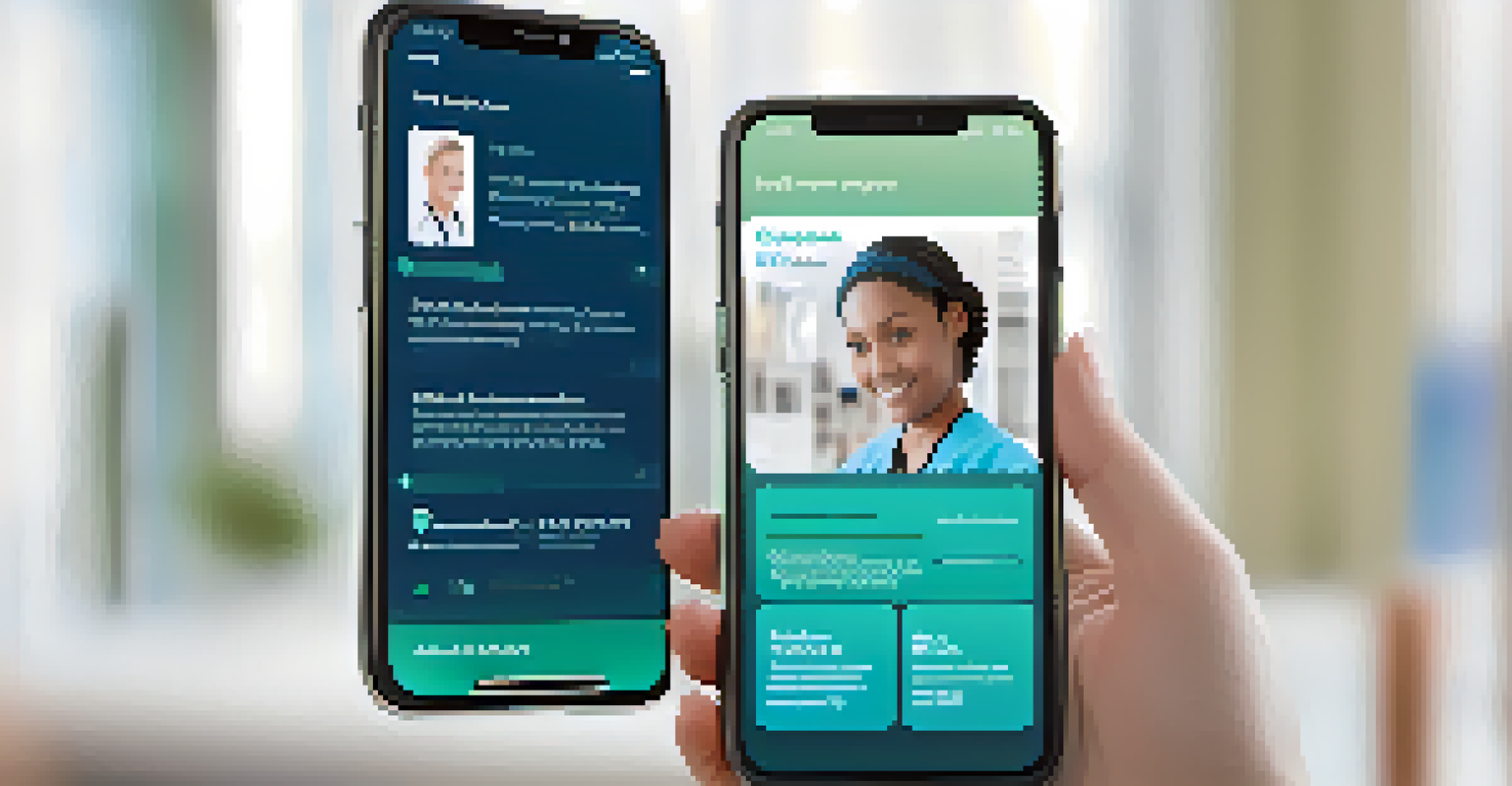Improving Healthcare Delivery Through Data-Driven Insights

Understanding Data-Driven Insights in Healthcare
Data-driven insights refer to the interpretation of data to inform decision-making. In healthcare, this means using patient information, treatment outcomes, and operational metrics to improve services. By harnessing data effectively, healthcare providers can make informed choices that enhance patient care and streamline operations.
In God we trust; all others bring data.
For instance, hospitals can analyze patient admission trends to predict peak times and allocate resources accordingly. This proactive approach not only improves patient flow but also reduces wait times, contributing to a better overall experience. When decisions are backed by solid data, the chances of positive outcomes significantly increase.
Ultimately, embracing data-driven insights allows healthcare organizations to shift from reactive to proactive strategies. This transformation is crucial in today's fast-paced medical environment, where timely and efficient care is paramount.
The Role of Electronic Health Records (EHRs)
Electronic Health Records (EHRs) play a critical role in gathering and analyzing patient data. These digital records compile comprehensive information about patient histories, medications, and treatment plans. By leveraging EHRs, healthcare providers can gain real-time insights into patient needs, enhancing care coordination.

For example, if a patient is admitted with a chronic condition, the data within their EHR can inform the medical team of past treatments and responses, aiding in tailored interventions. This kind of information sharing not only fosters collaboration among healthcare professionals but also enhances patient safety.
Data-Driven Insights Enhance Care
Utilizing data-driven insights allows healthcare providers to make informed decisions that significantly improve patient care and operational efficiency.
Moreover, EHRs can identify trends in patient health, allowing for preventive measures to be put in place. By recognizing patterns through data, healthcare providers can address potential health issues before they escalate, ultimately improving outcomes.
Predictive Analytics: Anticipating Healthcare Needs
Predictive analytics involves using historical data to forecast future events, and its application in healthcare is particularly powerful. By analyzing past patient data, healthcare organizations can predict trends, such as potential outbreaks of illness or spikes in emergency room visits. This foresight enables them to prepare and allocate resources effectively.
You can’t manage what you don’t measure.
For instance, during flu season, predictive models can help hospitals anticipate increased patient volumes, allowing them to staff up and stock necessary supplies. This proactive approach not only enhances operational efficiency but also ensures that patients receive timely care.
In addition, predictive analytics can support personalized medicine, tailoring treatment plans based on individual patient data. By understanding a patient’s unique health trajectory, providers can create more effective and targeted interventions.
Improving Patient Outcomes Through Data Analysis
Data analysis can significantly enhance patient outcomes by identifying effective treatment protocols. Through the examination of treatment data across populations, healthcare providers can pinpoint which methods yield the best results. This evidence-based approach leads to more informed clinical decisions.
For example, if a certain medication proves effective for a majority of patients with a specific condition, providers can adopt that as a standard treatment. This not only improves the quality of care but also builds trust with patients who see tangible results.
EHRs Improve Care Coordination
Electronic Health Records (EHRs) facilitate real-time insights into patient histories, enhancing collaboration among healthcare professionals and improving patient safety.
Furthermore, continuous data analysis allows healthcare systems to refine and improve treatment protocols over time. As new data emerges, adjustments can be made to ensure that patients always receive the best possible care.
Enhancing Operational Efficiency with Data Insights
Data-driven insights can streamline healthcare operations, reducing waste and improving efficiency. By analyzing workflow processes, hospitals can identify bottlenecks and optimize staff schedules. This ensures that the right number of healthcare professionals is available when needed, enhancing the overall patient experience.
For instance, data can reveal peak hours in clinics, allowing administrators to adjust staffing levels accordingly. This not only minimizes wait times for patients but also prevents staff burnout due to over-scheduling.
Moreover, data insights can inform inventory management, ensuring that necessary supplies are available without overstocking. This careful management reduces costs and improves resource allocation, leading to more sustainable healthcare practices.
Patient Engagement: The Power of Data Sharing
Engaging patients in their care is crucial for better health outcomes, and data sharing plays a key role in this process. When patients have access to their health data, they can make informed decisions about their treatment and lifestyle choices. This empowerment fosters a collaborative relationship between patients and healthcare providers.
For instance, patient portals allow individuals to view their medical records, lab results, and treatment plans. This transparency encourages patients to take an active role in their health, leading to improved adherence to treatment regimens.
Predictive Analytics for Proactive Care
Predictive analytics enables healthcare organizations to anticipate patient needs and allocate resources effectively, enhancing overall operational efficiency.
Additionally, data sharing can facilitate communication between patients and providers, enhancing the overall care experience. When patients feel informed and involved, they are more likely to engage positively with their healthcare journey.
Challenges and Solutions in Data-Driven Healthcare
While the benefits of data-driven insights in healthcare are clear, there are challenges that organizations must address. Issues such as data privacy concerns and the integration of disparate data systems can hinder progress. Ensuring patient confidentiality while harnessing data is paramount for maintaining trust.
To tackle these challenges, healthcare organizations can invest in robust cybersecurity measures and adopt standardized data protocols. This ensures that patient information is protected while still enabling the analysis needed for improvement.

Moreover, fostering a culture of data literacy among healthcare professionals can aid in overcoming integration hurdles. By training staff to effectively utilize data, organizations can maximize the potential of their data-driven strategies, ultimately enhancing healthcare delivery.